Floor Plan
This floor plan shows:
- The flow the participants will take, starting at the intro table.
- The three stations where most of the action and explanation takes place:
- climate change increases women’s hunger,
- climate change increases women’s poverty,
- climate change presents women with the choice of staying in the community or migrating along with the consequence of each choice.
- The path through the simulation ends with an opportunity to discuss reactions with other participants and write to legislators about solutions.
- Download floor plan link: Climate Change Hurts Women Worst. Participants start at the bottom of the floor plan.
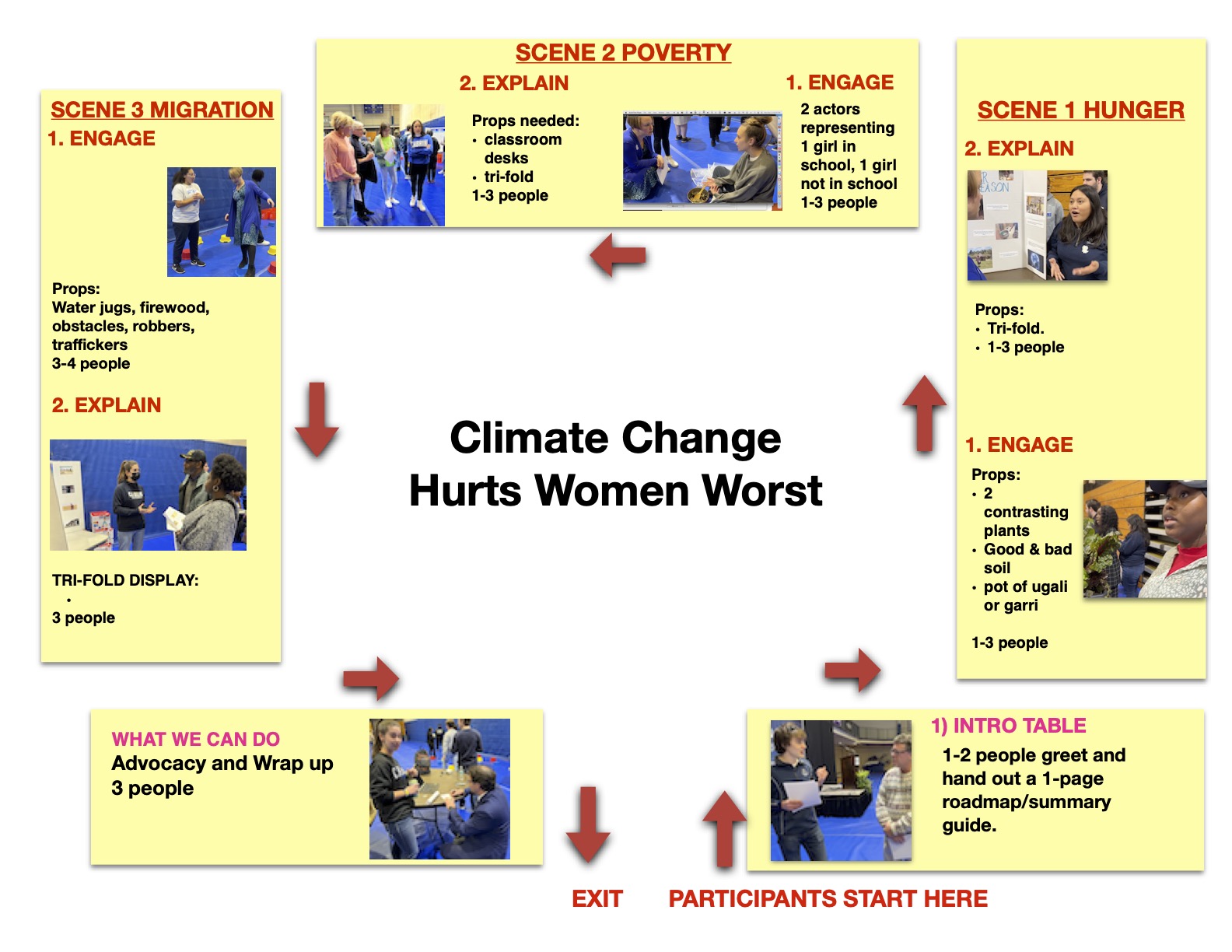
INTRO TABLE
One or two greeters introduce participants to the simulation. The greeters give a one page handout to each participant and a brief explanation of what the simulation consists of.
Download handout as PDF: Onepage 2022
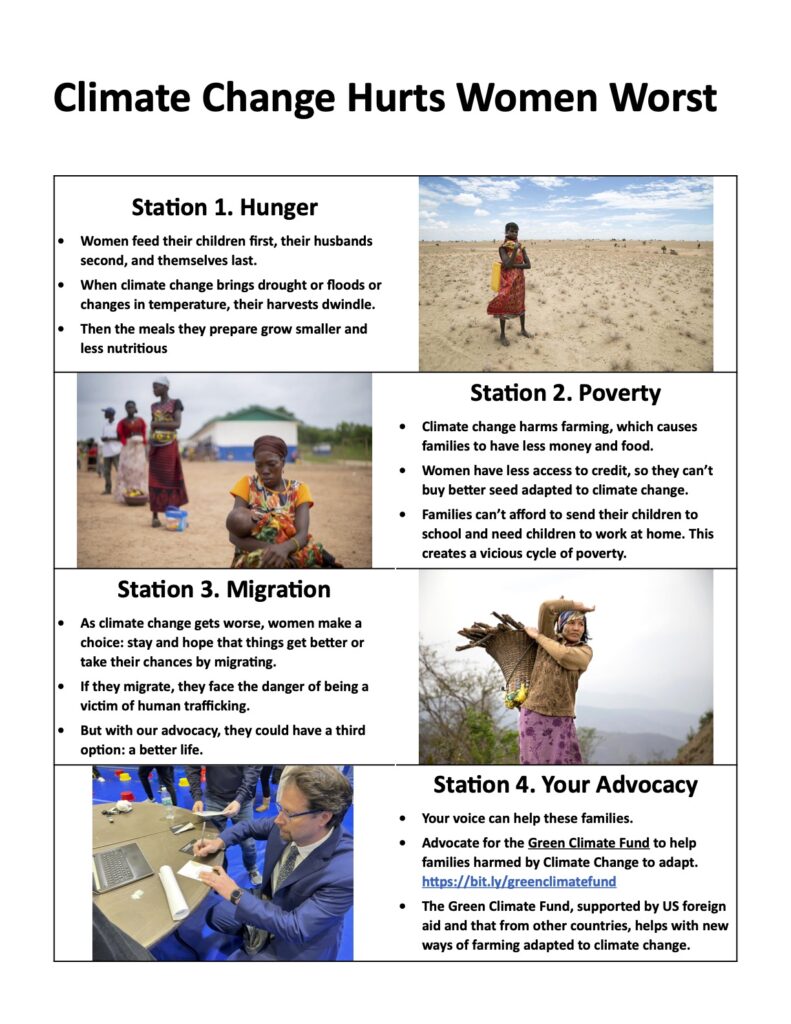

STATION 1: HUNGER
The hunger station explains how climate change affects the food people eat, both in quantity and quality, and how women feed their families before themselves. Participants were invited to try garri, a cheap staple food in many poor countries made from ground cassava. Other food eaten by poor people in other countries could be substituted.
- ENGAGE: 1-2 students engage participants by showing 2 contrasting plants–one plant is planted in poor-looking dirt and gravel and is barely growing while a second set of plants is planted in rich, black topsoil and is growing vigorously. 1-2 students are cooking garri (cassava), ugali (corn meal), tortilla, or another minimally nutritious food. Enactors offer small plates of this food to participants and explain that this is the daily diet of millions of subsistence farmers.
Sick plant in gravel – Healthy plants in good soil

Trifold for Station 1
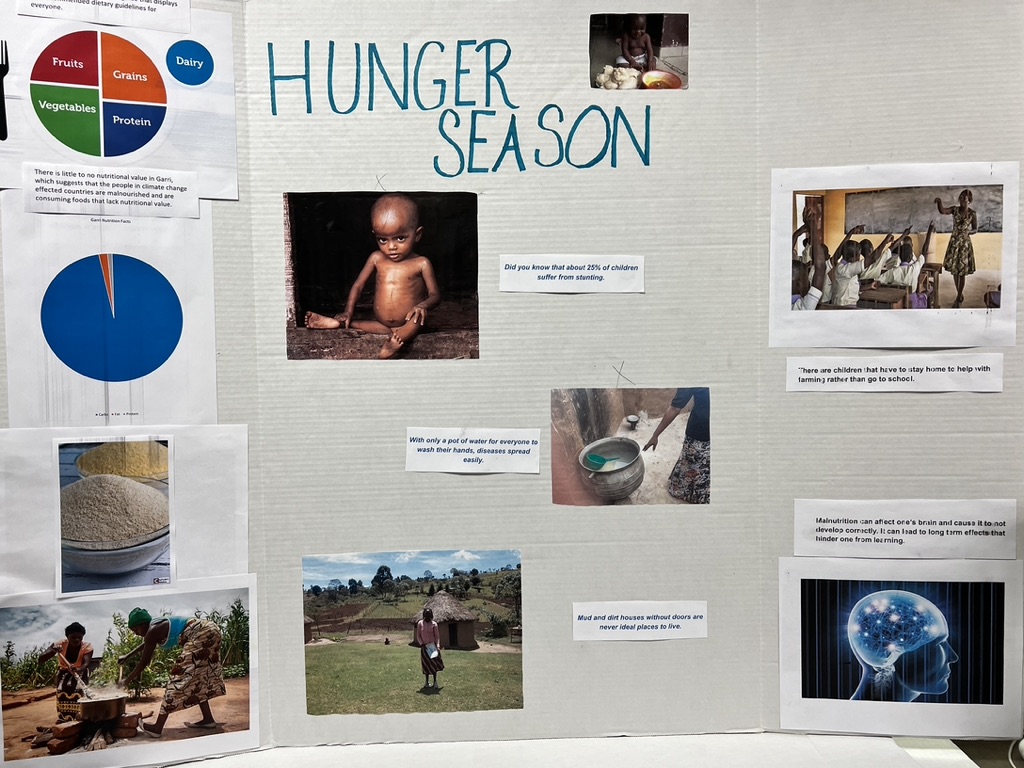
2. EXPLAIN: 2-3 students, using the above trifold, speak with participants about how climate change affects subsistence farmers. An excellent source of background is “The Last Hunger Season” book or short videos.
STATION 2: POVERTY
Then, the poverty station presented how climate change keeps families in a vicious cycle of poverty.
- ENGAGE: 1-2 students engage with participants by posing the dilemma families in poverty face. Some families may have enough resources to educate a daughter or, without any resources, they may have to try to get their teen daughter married or worse. Two students play the parts of two girls, one whose family is able to educate her and the other who was married young.
- “The Last Hunger Season” video 6 shows how difficult it is to educate girls.
- EXPLAIN: One of the student leaders tries to engage participants in a discussion with the “two girls.” Here we see a participant speaking with one of the “girls” who was married young, with props of cooking utensils, a wedding veil, talking about why she left school and is now a mother. Not seen in the picture is the other “girl” who is sitting at a school desk and speaking about the opportunities open to her with an education.

Trifold for Station 2
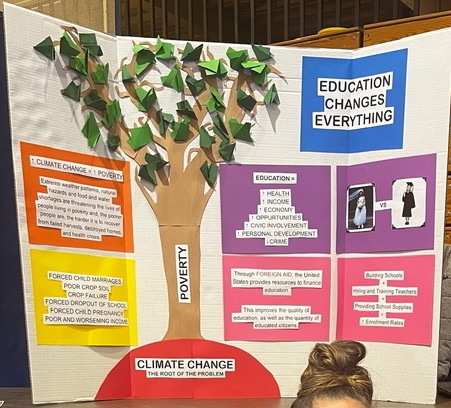
STATION 3: MIGRATION
- ENGAGE: The migration station brings the two previous scenes together. If climate change has reduced food output and increased poverty and hunger, many people faced with these extreme situations are forced to choose: will they stay in their community or will they become migrants or “climate refugees.” So the students in this station asked participants what they would do if they were faced with the choice of migrating or staying in their home country. If they chose to migrate, they packed a small bag with limited items and completed a short obstacle course, during which they were attacked and robbed of everything. If they chose to stay, they completed a similar obstacle course while carrying buckets of water back to their family and foraging for firewood for cooking, which is a common task that women and girls take on. Here too, the participants were set upon by robbers and worse. The students laid out a course ahead of time, on the one hand, with bookbags filled with clothes, food, etc., for the women who chose to migrate. For the participants who chose to stay, the students filled large buckets with water and planted stacks of firewood around the area, which participants had to search out and bring back.
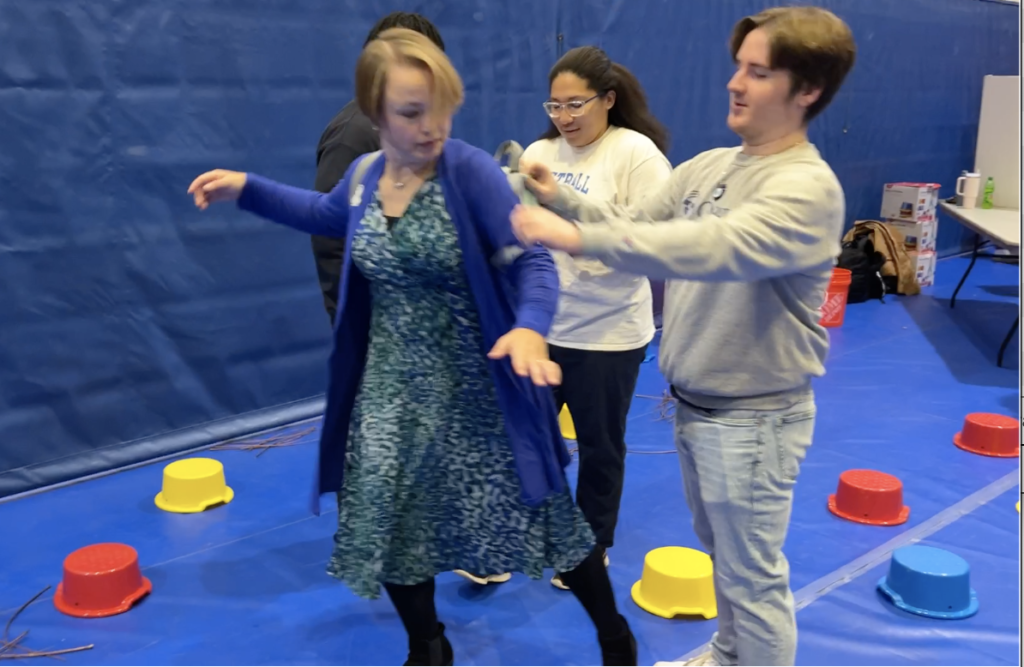
Here, a robber grabs a young girl who tried to migrate because of hunger and poverty.
EXPLAIN: Using a trifold, students spoke with participants about the difficult choice women must face when climate change makes their situation so difficult.
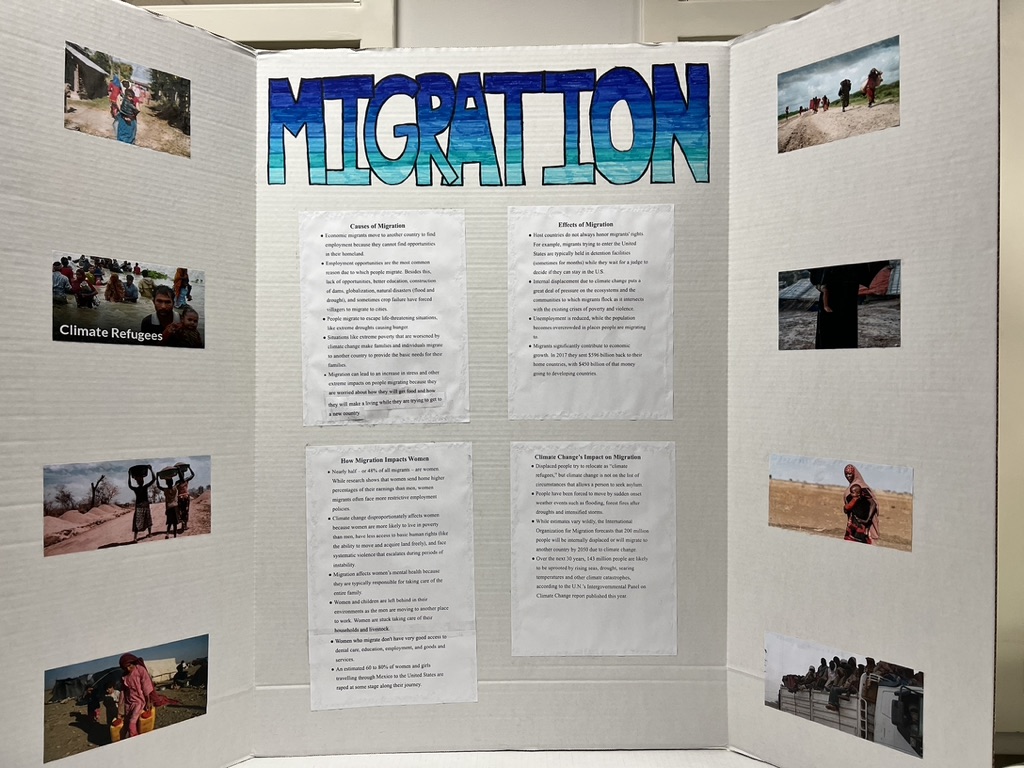
ADVOCACY
Finally, participants move on to the final station, advocacy, discussed in the next page.
